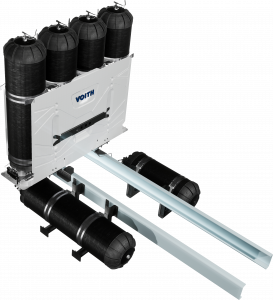“With hydrogen, we are creating this entirely new energy system,” says Behar. “That requires a large infrastructure to be built, and that takes a long time and a large capital investment.” A robust infrastructure necessitates ample production and storage facilities, high-powered compressors, pipelines, tanks, fueling stations and more.
Another obstacle is getting hydrogen production to scale at low cost. Governments around the world are committed to seeing this happen. The European Green Deal and the Infrastructure Investment and Jobs Act and the Inflation Reduction Act in the U.S. provide incentives to build the necessary infrastructure and scale up production. (See the sidebar on page X for more information.)
“You will need enough production to stimulate truckers, fleet operators and other early adopters to count on hydrogen,” says Wolak. “If they are going to invest in a 10-year truck platform, will they be assured there is enough volume from suppliers to get the fuel they need?”
Supply security is crucial. “It’s all about resiliency – the ability to quite literally keep the lights on,” says Behar.
There is concern not just about sufficient volumes of hydrogen, but also availability of the materials used in ancillary components, such as storage tanks.
“It is feasible to produce the tanks, but carbon fiber is very expensive,” says Pointner. “And there is worry in the industry that there might not be enough carbon fiber to supply all the tanks required.” She adds that the composites industry needs to push for efficient production of carbon fiber, as well as develop viable carbon fiber recycling methods that reduce demand for virgin fibers.
An All-Hands-On-Deck Approach
Despite the challenges, companies within the hydrogen energy industry remain confident.
“It will take time, but the U.S. government and the Department of Energy are committed to hydrogen energy,” says Behar. “In the next five years, we are going to see a renaissance in green energy, hydrogen manufacturing and engineering innovation.”
Composites companies that want to be a part of that renaissance first need a thorough understanding of hydrogen energy and the integrated system required to produce, store and distribute it. That requires forging new collaborations.
“With the market in such infancy, this is an extraordinary opportunity to really learn from one another and from the early adopters,” says Behar. “Find partners in the industry who can tell you about the challenges they and their end-use customers are facing.” She adds that building the infrastructure and scaling up production will require input from companies in many industries, including composites.
“This is where an all-hands-on-deck approach – and hearing lessons that composites companies have learned from other industries – will be extremely valuable,” says Behar.
The most fruitful relationships start on the ground floor. “From a composites manufacturing perspective, you really need to understand every detail right from the beginning,” says Pointner. “It’s different from other products where you can learn a lot along the way because development work [in hydrogen energy] is very expensive and products need to meet extremely stringent requirements. It’s a new field with new product dimensions that push the boundaries in every direction.”
There is still a lot of work to be done before hydrogen energy realizes its potential. But the alignment of societal support for decarbonization, government mandates and incentives, and technological advancements has generated momentum for the green energy carrier.
“Its time has come,” says Wolak. “When you look at where we are today with rapid decarbonization, electrification and transition from fossil fuels, hydrogen becomes this really useful resource that has come of age.”
Susan Keen Flynn is managing editor of Composites Manufacturing magazine. Email comments to sflynn@keenconcepts.net.
Voith Composites uses a towpreg winding process to manufacture 700-bar type IV hydrogen storage tanks.
Photo Credit: Voith Group
The Voith Plug & Drive H2 Storage System provides an integrated solution to help heavy duty truck manufacturers convert to green energy.
Photo Credit: Voith Group




